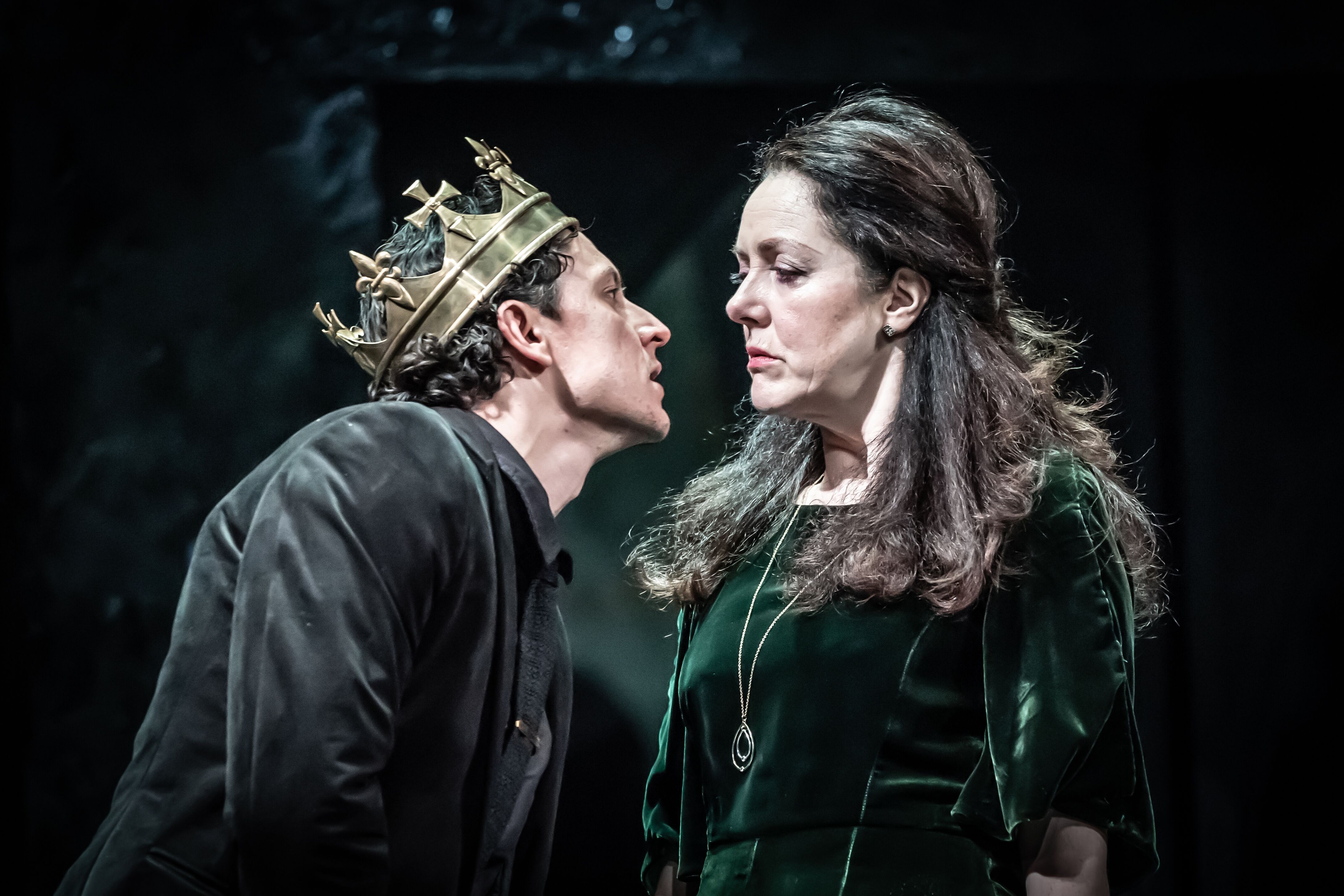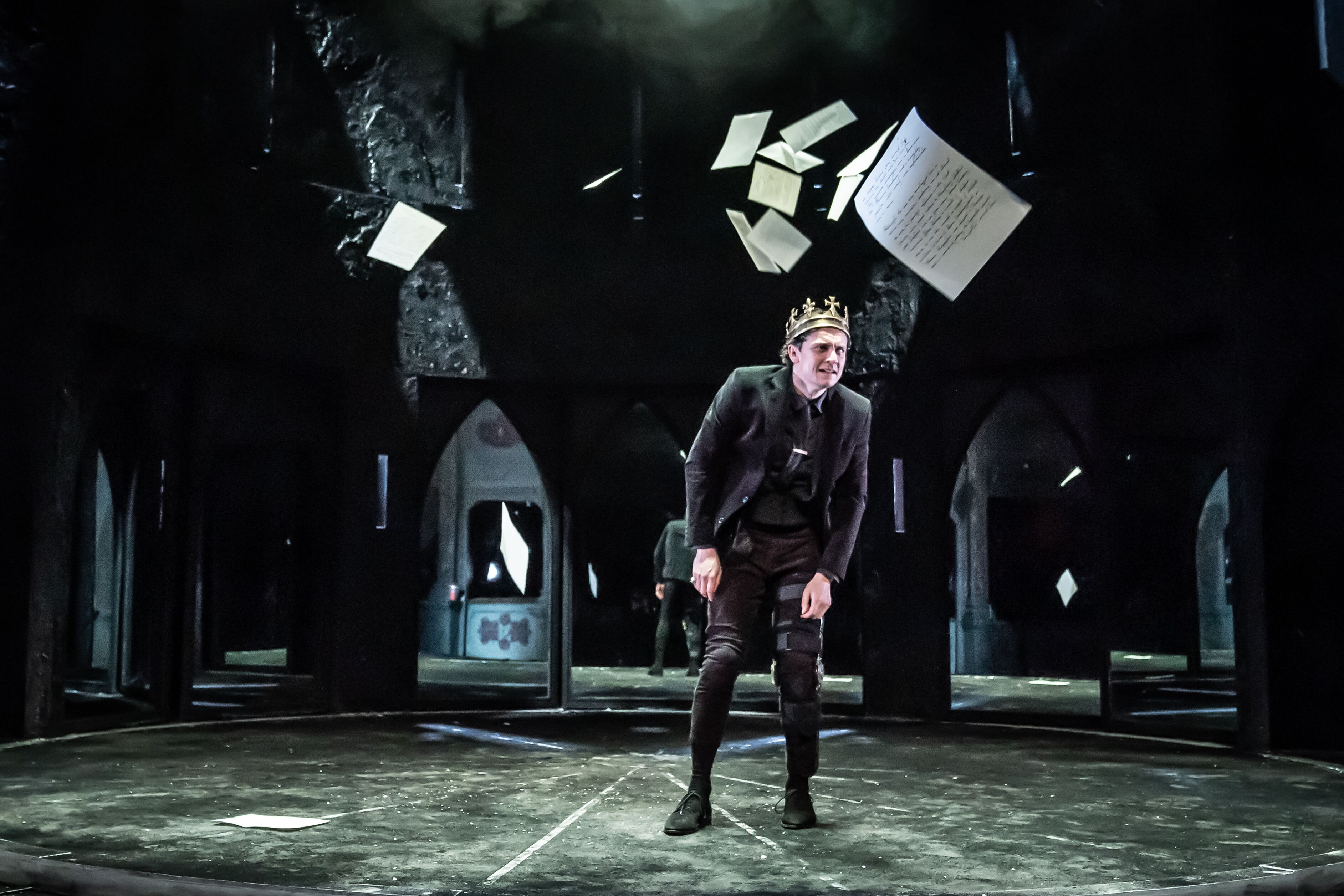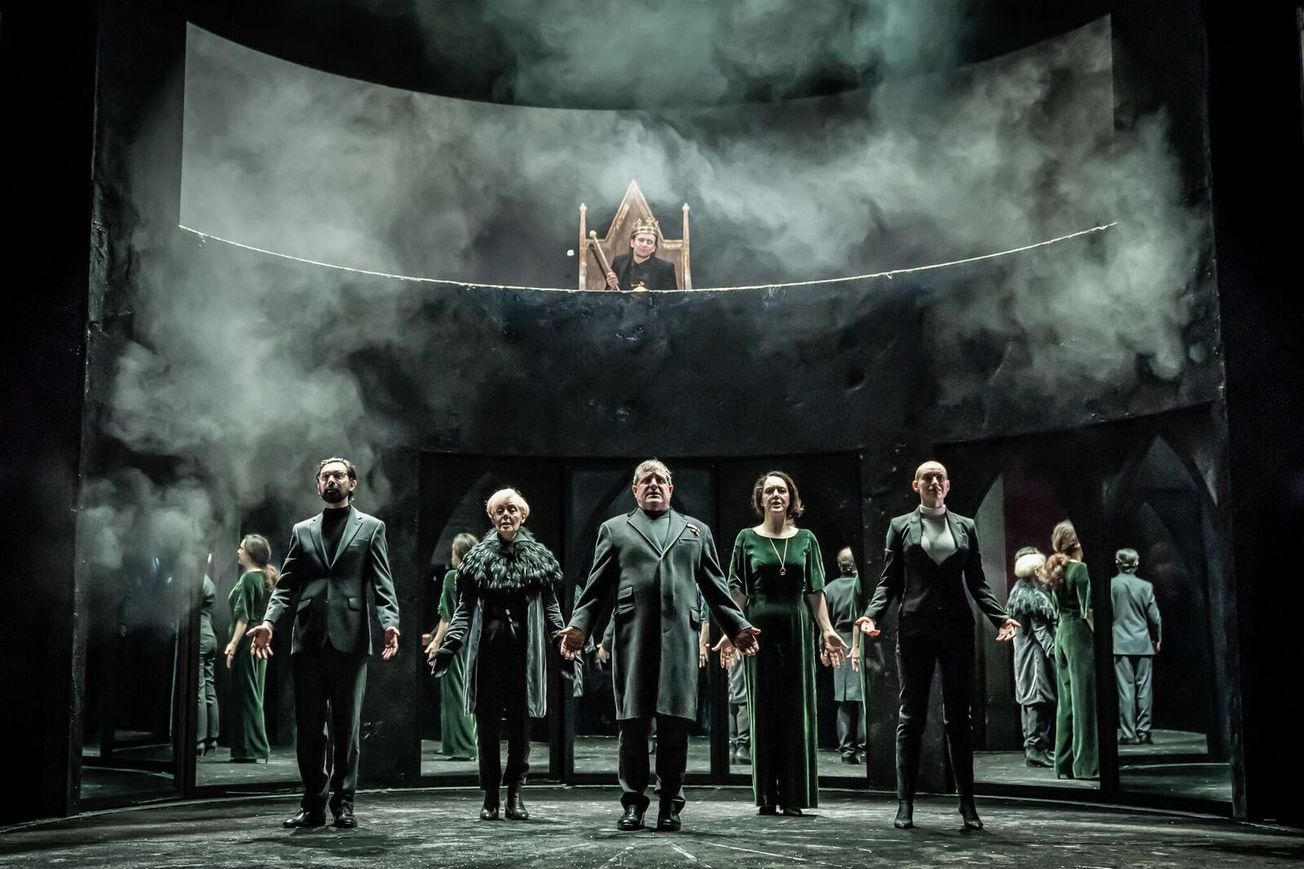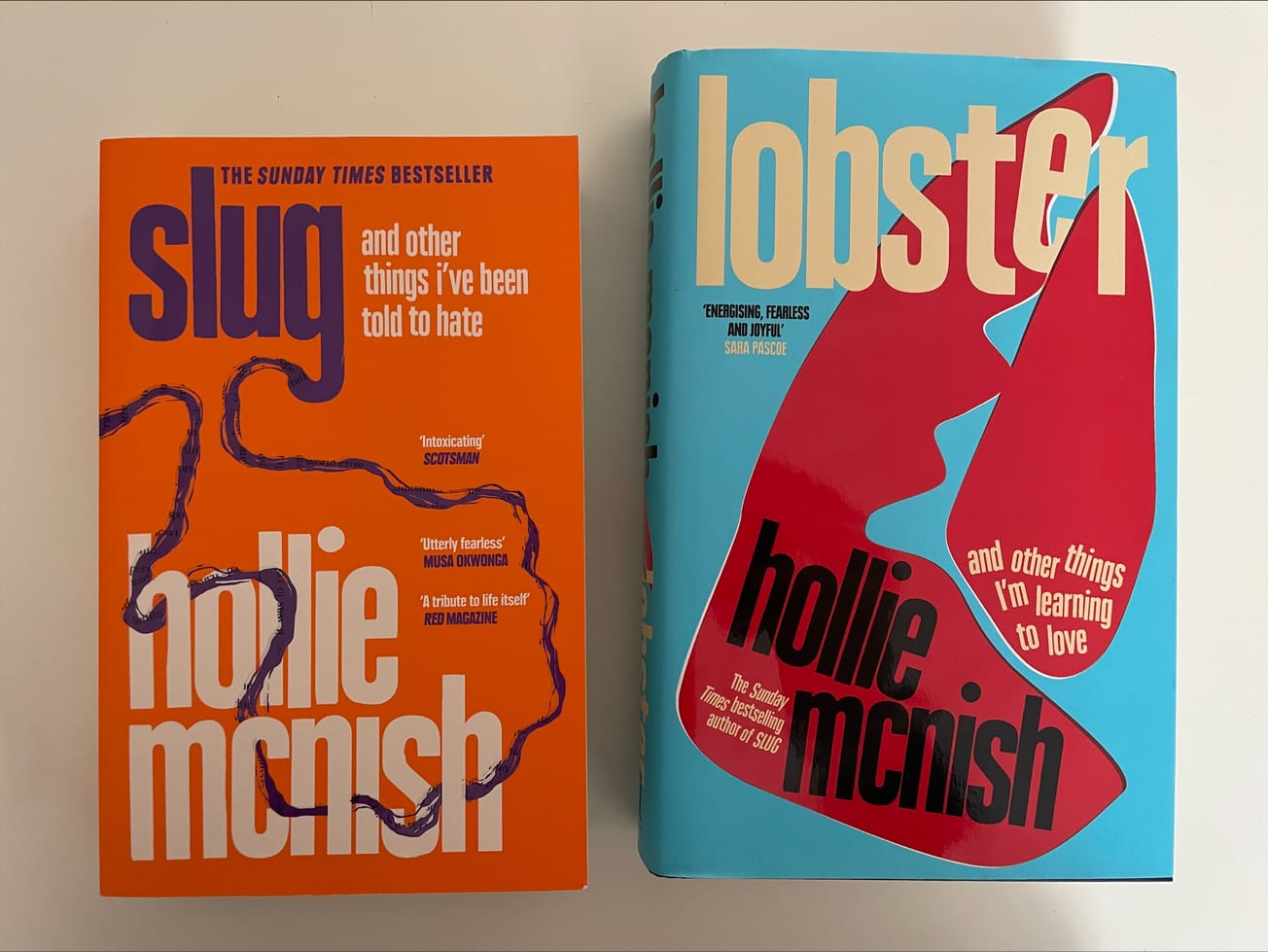By George Ruskin, first year French and German
Tangible, viseral and terrifying, George Ruskin reviews Bristol Old Vic's reminagining of Shakespeare's Richard III.
“To dream upon the crown” is the twisted mantra to which this expression of animalistic humanity is set. John Haidar’s reworking of Shakespeare’s 1593 play recounts the Machiavellian assumption and pitifully short reign of King Richard III. This play viscerally spouts the proverb ‘you reap what you sow’, and Richard’s hyperbolic demise allows the audience to carnally revel in the zeitgeist of bloody revenge.

Bristol Old Vic / Marc Brenner
Rather than yielding to the temptation of creating a breeches-and-all production with hackneyed RSC received-pronunciation, Haidar instead places us in what seems more akin to 1980s East Berlin; smart, androgynous costumes and the copious usage of utilitarian lighting and a contemporary soundtrack evoke an atmosphere of state-secrets and Stasi oppression, whilst also retaining a potently Shakespearian streak. Each scene is rich in strobes and intrigue; a single red flash signifies yet another murder in the spiralling body count.
The set is a single porous artistic installation; a mirrored cage, a warren of seven doors – one for each of Richard’s victims – from which their ghostly forms frequently appear, most effective is their spectral tormenting of Richard before the Battle of Bosworth Field. Furthermore, a dystopian royal balcony has been chiselled into the homogenous set - the location of Richard’s wonderfully macabre coronation, in which he gleefully snatches the orb and sceptre, whilst below, the company perform a dark ritualistic choreography to crescendoing Gregorian chant.
Richard (Tom Mothersdale) is acutely aware of the audience’s presence throughout, and it is as if his actions are an attempt to show off to us; he takes sick pleasure in any reaction we grant him. He intimately brings us into the fold so that we become accessories to his murders, Francis Underwoodesque audience manipulation appears to have been an inspiration.

Bristol Old Vic / Marc Brenner
Richard’s soliloquies in the first half are delivered with such impudent irreverence, that we acquiesce in his heinous crimes, and even begin to forgive our anti-hero, such is his debauched charisma. His one-liners evoke a raucous audience reaction, especially in the sizzling repartee between Richard and Anne (Leila Mimmack), which is an exercise in comedic delivery par excellence, as intense hatred metamorphoses into passionate marriage before our eyes, which is the stand-out scene.
This veneer ebbs during the interval, and we return to a series of restless, fractured vignettes as “hell hound” Richard loses his bony grasp on England’s throat. His previously symbiotic relationship with us changes; he picks on an audience member to whom he delivers his most threatening monologues. The shifting sands of favour and betrayal are well portrayed by a constant transience of stage exits and entrances. The defection of his previously loyal spin-doctor Buckingham (Stefan Adegbola) sends Richard further down a manic spiral, which ends in a catharsis to end all catharses when Richard now covered in mud writhes, spits and curses whilst being tormented by his company of victims.

Bristol Old Vic / Marc Brenner
Hyperbole is uniquely harnessed as a reflection of Richard’s megalomania. Blood spurting as Richard bites off Hastings’ (Heledd Gwynn) ear; Hastings’ severed head being exhibited in a bloodied plastic bag; or Richard’s writing stoop often stray into farce. However, with the exception of the rather amateurish knife fight between Richard and Richmond (Caleb Roberts), these elements serve rather to embellish Richard’s puerile personality. This is expressed sensitively when The Duchess of York (Eileen Nicholas) scolds him as only a mother can. Richard, crazed, still cowers from his mother’s furore.
Richard is a multifaceted character, and this is Haidar’s most successfully reworked element. Richard III views Richard through the lens of enlightened reason - we now call him a psychopath, a phenomenon that didn’t exist in the 16th century. Such a clinical reinterpretation makes the plot more tangible, more visceral and more terrifying.
★★★★★
(Featured image credit: Bristol Old Vic / Marc Brenner)
What are your thoughts on BOV's Richard III? Let us know in the comments below or on social media.









